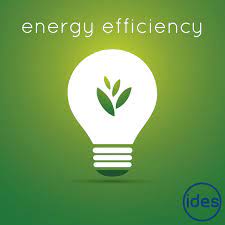Courtesy : www.eesi.org
Energy efficiency
Energy efficiency simply means using less energy to perform the same task – that is, eliminating energy waste. brings a variety of benefits: reducing greenhouse gas emissions, reducing demand for energy imports, and lowering our costs on a household and economy-wide level. While renewable energy technologies also help accomplish these objectives, improving energy efficiency is the cheapest – and often the most immediate – way to reduce the use of fossil fuels. There are enormous opportunities for efficiency improvements in every sector of the economy, whether it is buildings, transportation, industry, or energy generation.
Buildings
Building designers are looking to optimize building efficiency and then incorporate renewable energy technologies, leading to the creation of zero-energy buildings. Changes in existing buildings can also be made to reduce energy usage and costs. These may include small steps, such as choosing LED light bulbs and energy efficient appliances, or larger efforts such as upgrading insulation and weatherization.
Energy Generation and Distribution
Combined heat and power systems capture the “waste” heat from power plants and use it to provide heating, cooling, and/or hot water to nearby buildings and facilities. This increases the energy efficiency of power generation from approximately 33 percent to up to 80 percent. The smart grid is another system that will improve the efficiency of electric generation, distribution, and consumption.
Community Design
Neighborhoods that are designed with mixed use developments and safe, accessible options for walking, biking, and public transportation are key to reducing the need for personal vehicle travel.
Vehicles
More energy efficient vehicles require less fuel to cover a given distance. This generates fewer emissions, and makes them significantly less expensive to operate. Plug-in hybrids and fully electric vehicles are particularly fuel efficient.
Freight
Freight can be moved more efficiently by improving the efficiency of rail and truck transportation and by shifting long-distance freight transport from trucks to rail.
Human Behavior
The four strategies above improve energy efficiency primarily through technology and design. However, the way people use these technologies will significantly impact their effectiveness. What impact can a highly efficient technology have if households and businesses are not motivated to buy, install, and/or activate it? How does driving behavior and unnecessary idling impact gas mileage? How many people will use public transportation if there is a cultural stigma against it? Research has shown that 30 percent of the potential energy savings of high efficiency technologies is lost due to a variety of social, cultural, and economic factors. Addressing these factors is also an important component of making our economy more energy efficient.




